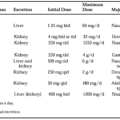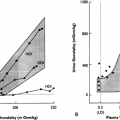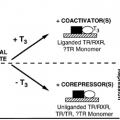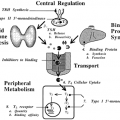PROLACTIN HYPERSECRETION
MICROPROLACTINOMAS
In women with microprolactinomas (tumor diameter of <10 mm) who require therapy for menstrual irregularities, infertility, or galactorrhea, bromocriptine is the treatment of choice.1,2 and 3 A dose of 2.5 to 10 mg per day relieves the symptoms and normalizes serum prolactin in nearly 90% of patients. Approximately 10% of these patients fail to respond to bromocriptine regardless of the dosage, but many treatment failures are related to an inability to tolerate a sufficient dosage. With treatment, prolactin levels may normalize within a few days to several months. A reduction in microadenoma size has been reported in up to 75% of treated patients.
When bromocriptine is discontinued after 1 to 2 years, 20% of patients maintain normal prolactin levels.4 In most patients, hyperprolactinemia recurs, although 25% have prolactin levels less than half the pretreatment value. No test predicts which patients will have sustained normalization. Prolactin levels usually reach a stable plateau within 2 months, but serum prolactin can reach the pretreatment level in <2 weeks. Some authors recommend that bromocriptine therapy be discontinued in patients with prolactin-secreting microadenomas after 1 to 2 years, with reinstitution of therapy only in those patients who again develop elevated levels.
The surgical treatment of microadenomas yields a high initial cure rate (85%), but the procedure is associated with complications. Moreover, with longer follow-up periods, half of these “cured” patients have a recurrence of hyperprolactinemia5 (see Chap. 13 and Chap. 23. Surgical treatment should be reserved for patients whose microadenomas fail to respond to bromocriptine or other dopaminergic agents or for those who are unable to tolerate the side effects of the drug regimen. Because studies of untreated patients have revealed that many microadenomas remain small for years, withholding treatment in patients with asymptomatic hyperprolactinemia may be reasonable.6,7 Nevertheless, although patients may not be disturbed by amenorrhea or galactorrhea, prolonged hypogonadism increases the loss of skeletal mass, so bromocriptine therapy is recommended for these patients, although for women not interested in fertility, estrogen therapy is also an option.3,8
MACROPROLACTINOMAS
The treatment of macroprolactinomas (tumor diameter of ≥10 mm) remains controversial. If the goal is to achieve lasting normalization of prolactin after discontinuing therapy, then surgery or radiation therapy is most effective; however, bromocriptine controls prolactin levels in more patients than does either surgery or radiation.9
A treatment regimen of 5 to 15 mg per day of bromocriptine causes serum prolactin levels to fall to <10% of the pretreatment value in 90% of patients and normalizes prolactin levels in ˜66% of patients.10 This decline in serum prolactin is usually accompanied by cessation of galactorrhea, return of normal menses in women, and improvement of libido in men. (The resolution of impotence in men occurs less frequently.) The maximal reduction of prolactin usually is seen after 2 to 3 months of therapy; however, some patients require up to 9 months of therapy for maximal suppression of prolactin. The gonadotropin abnormalities frequently found in these patients commonly improve with bromocriptine therapy.11 Abnormal secretion of growth hormone, adrenocorticotropic hormone (ACTH), or thyroid-stimulating hormone (TSH) occurs less frequently than gonadotropin abnormalities but is less likely to resolve.
Stay updated, free articles. Join our Telegram channel

Full access? Get Clinical Tree








